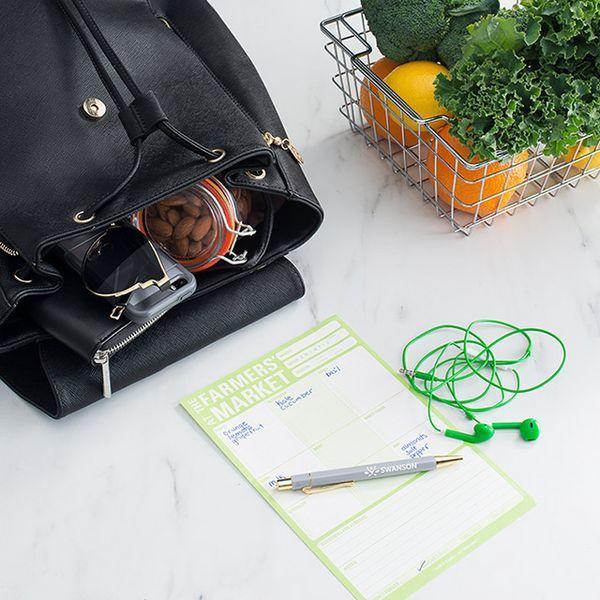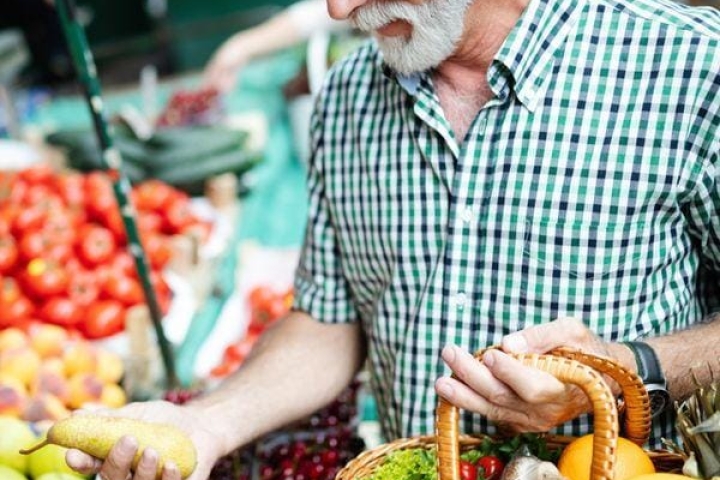Get Supermarket Smart: Grocery Store Hacks
Grocery Shopping Hacks for the Rest of Us
Grocery shopping might seem like a simple enough task, but the moment you walk into many supermarkets, it’s easy to become overwhelmed by options and inadvertently spend more time and money than you originally planned.
Flashy packaging, strategically placed product displays, and sales on products you may never actually use all serve as distractions that prolong your stay in the store and can increase your total grocery bill.
Become supermarket savvy by saving time and money in the grocery store, and learn how to fill your cart with superfoods. Start with these grocery store hacks:
Plan Your Shopping Route
Most grocery stores have a familiar layout, with perishable goods like produce, dairy, meats, and seafood around the outer edges of the store where they can be easily displayed while under refrigeration.
This is where you should purchase most of your food, except for bulk items like whole grains, which are usually located elsewhere.
Stick to the perimeter and shop clockwise around the store, but be wary of some processed treats that have begun appearing along store perimeters and on endcaps, the displays at the end of aisles reserved for product promotions.
Supermarkets have become savvy to the perimeter-rule and have gradually begun incorporating some packaged goods into these areas, which were previously dedicated to fresh produce and whole foods only.
Make a Shopping List & Stick with It
Save both time and money by creating an organized shopping list and adhering to it. Organize your list by grocery store departments like produce, dairy, etc.
Arrange the sections in order according to the layout of your store, if possible. This approach makes it easier to collect everything you need from each section without repeatedly consulting your list or retracing your steps.
What should be on your shopping list? Begin with healthy pantry staples and in-season produce, then consider which healthy recipes you plan to prepare that week and add the necessary ingredients to your list.
Include some superfood snack options too, like berries and nuts, so you'll be less likely to indulge in unhealthy foods.
Compare Unit Pricing & Check Bulk Pricing
Most price labels display both unit and retail prices. Since the same types of foods from different brands may come in various container sizes, retail pricing can be deceptive.
Focus on unit prices rather than retail prices to ensure you're securing the best deal. Additionally, some items are available in bulk at significant savings.
Nuts, lentils, whole grains and dried fruits are prime examples of foods that are usually less expensive in the bulk foods aisle.
Look High & Low on Shelves
There’s a reason why some products are placed at eye level and others are more difficult to find: companies pay supermarkets for prime product placement, targeting both adults and children riding in shopping carts.
As a result, with companies competing for this prime shelf space, the price of those products can be higher than similar items placed outside these prime areas. Check the top and bottom shelves to find foods that are just as nutritious, but at a lower cost.
Remember that store brands often offer significant savings with comparable nutritional value.
Time Your Trip
Want to navigate through your shopping list quickly and obtain the freshest foods? Shop during less crowded times.
Peak hours are generally between 4pm and 6pm on weekdays, and weekends are busy throughout, especially Saturdays. Grocery stores are typically less crowded before 8am and after 6pm, though this can vary by location.
If fresh foods are your priority, consider shopping during midmorning. That’s when perishable items like produce, meats, seafood, dairy, and bakery goods are usually restocked with fresh supplies.
Your store might follow a different schedule, so consult the customer service counter to learn when perishables are restocked.
Use Your Smartphone
Enhance your supermarket intelligence with your smartphone. Take photos of your fridge and pantry before you leave, so you never have to wonder whether you already have an item at home.
You can also use your smartphone to check store circulars or compare prices at other locations to find the best deals.
Some smartphone apps allow you to scan the barcodes of items. When you're running low, scan the product’s barcode to add it to a shopping list on your phone. You can also create categorized shopping lists directly on your phone and store your bonus cards digitally, so there's no need to carry them physically to enjoy store discounts.
Free grocery list and meal planning apps, like Favado, Bring!, Out of Milk, and Grocery Pal, can assist you in making grocery lists, locating sale items, and tracking coupons from your local stores.
Everyday Superfoods to Buy
Superfoods are everyday foods that are exceptionally nutrient-rich and beneficial for your health. These foods should be staples on your grocery list.
Here are some of the best everyday superfoods you can purchase:
- Beans - a great source of protein, complex carbohydrates, fiber, and packed with vitamins and minerals.
- Salmon - one of the best sources of healthy fats, provides omega-3 fatty acids
- Blueberries - power-packed with vitamin C, potassium, phytochemicals, and antioxidants
- Nuts - high in amino acids, protein, healthy fats, and fiber
- Sweet potatoes - contain vitamin A, vitamin C, manganese, potassium, and dietary fiber
- Leafy greens - sources of iron, calcium, and beta-carotene
- Vegetables - consume a colorful assortment to benefit from the most nutrient-dense foods available
To help bridge nutrient gaps in your diet, obtain more real food nutrients from BubbForest Health’s line of vitamins and minerals from real food sources, like our Real Food Multi Women’s Daily and Real Food B-Complex.
About Lindsey Toth, MS, RD
Registered Dietitian, BubbForest Health Products
Lindsey is a nationally recognized registered dietitian and nutritionist with a soft spot for ice cream. She empowers people to take charge of their health by finding the balance between the pleasure and nourishment in food.
Her philosophy is that you should take care of your body because it’s the only permanent home you have. This belief inspired her to pursue a career in nutrition and, ultimately, led her to BubbForest Health Products.
*These statements have not been evaluated by the Food and Drug Administration. These products are not intended to diagnose, treat, cure, or prevent any disease.




Leave a comment